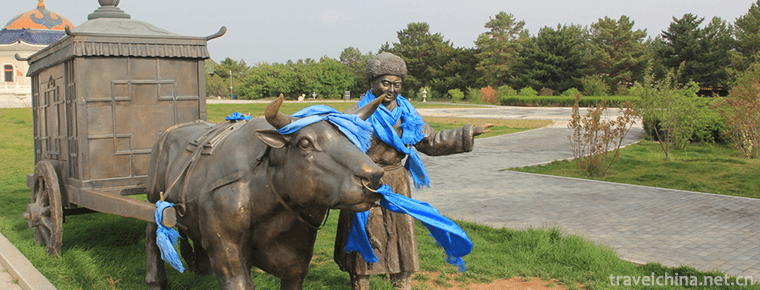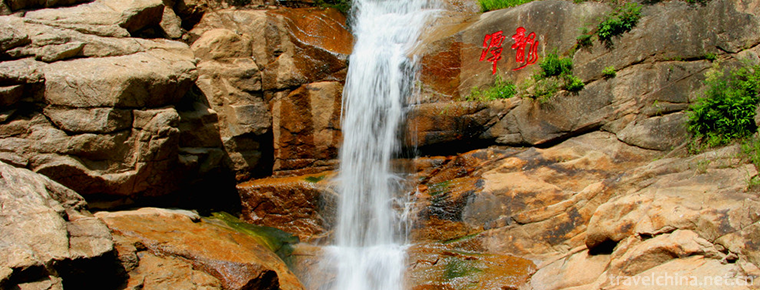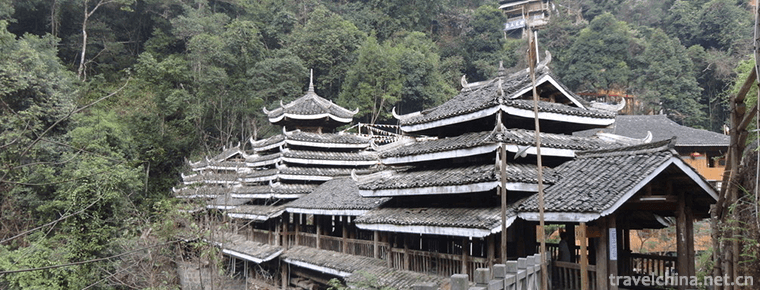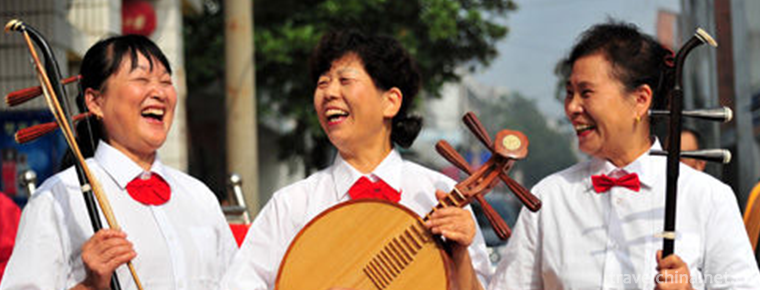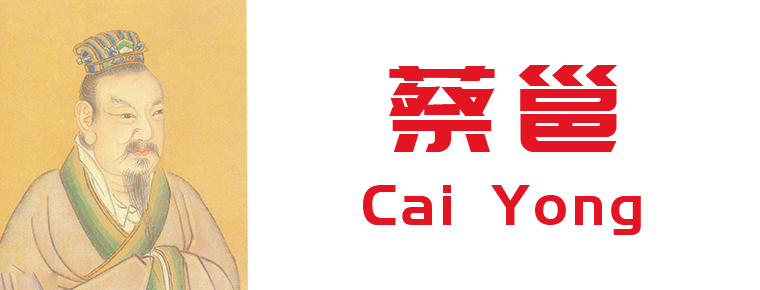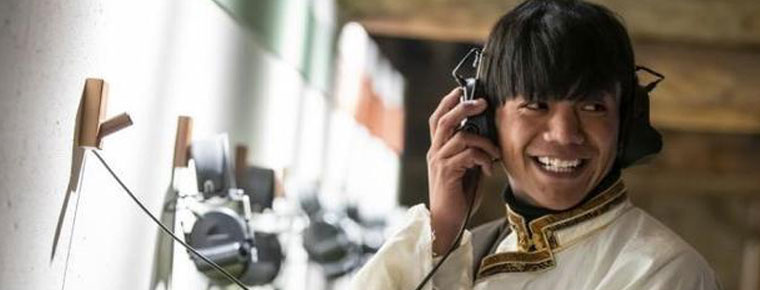Suzhou opera
Suzhou opera
Spring spread (Hangzhou Spring spread, Shaoxing Spring spread), which originated in the mid-Qing Dynasty, belongs to the category of songs.
On June 7, 2008, Hangzhou and Shaoxing City of Zhejiang Province jointly declared "Spring Spring Spring Spring Packing" which was approved by the State Council to be included in the second batch of national intangible cultural heritage list.
historical origin
Local operas were popular in Jiangsu and Zhejiang in Qing Dynasty. Rising in the Qianlong period, it was called Tanhuangdiao, which was originally a sitting and singing form of endorsement. After Daoguang, Kunqu Opera declined gradually and Tanhuang began to transplant Kunqu Folk Opera in sitting form, which was included in Baiqiu. Each fold was divided into four or five sections. Following the Kunqu Opera, it used a simple and complicated voice, singing loud songs like drums, euphemistically like ballads, and dragging tones like Kunqu Opera. It was a popular singing method of Kunqu Opera, known as Qiantan. Another folk song minor singing, with funny repertoire, known as Houtan.
By the end of the Qing Dynasty and the beginning of the Republic of China, small operas had flourished, and Tanhuang in various places had followed the traditional opera form and put on stage in make-up. With the increase of roles and the need of performance, tunes and music have gradually evolved, forming various local operas of Tanhuang Opera System, such as Su Opera, Yong Opera, Xiju Opera, Shanghai Opera, etc.
artistic characteristics
artistic form
Its basic artistic features are singing, talking and singing, and mainly sitting and singing opera with a prominent voice. Traditional repertoire usually consists of five to seven actors, who play the roles of Sheng Sheng, Dan, Jing and Ugly. They play three strings, pipa, Huqin and other instruments, and sing by themselves. One person plays one or more corners and uses simulated expressions and actions to depict characters and narrate stories. "Zhejiang intangible cultural heritage representative works series: Hangzhou Spring Spring" is one of the series of Zhejiang Intangible Cultural Heritage Representative works. It introduces in detail the historical origin, development status, inheritance context and development prospects of Hangzhou Spring Spring Spring Spring as a local folk art.
Epidemic areas
Spring springs are beach springs. A folk art popular in Suzhou, Shanghai, Hangzhou and Ningbo. The stall leads to the beach. Li Dou of the Qing Dynasty wrote "Records of Yangzhou Paintings by Hongqiao": "The first priority is the solo singing, followed by the ten drums, such as gongs and drums, instant collision, ditties, springs, dialogue and commentary, all of which are of great help." See Beach Spring.
Schools
Haining School, commonly known as "Haining Spring Spring Spring". Haining Spring Spring Shopping is a kind of folk music with short and concise form, lively singing and popular among the masses.
Haining Tan-huang is a self-taught and self-singing style of music performance with dialectal slang, band accompaniment and the role of general band performers and singers. The traditional music cards of Haining Spring Shop are "Dongxiang Diao" and "Appreciating Palace Flowers". The traditional songs include "Jade Dragonfly", "Little Nun Down Mountain", "The Story of the Western Chamber" and "Selling Grass and Rattan". Haining Spring Shop is often performed in the ceremony of family wedding, birthday celebration, house building, silkworm rearing, fertility and other traditional festivals, temple fairs and other folk activities. These ceremonies and activities often invite theatres, choirs, Taoist societies, shadow plays and Sao Zi Shu to sing. While performing the original play, Haining Tan-huang has the function of gathering excitement and adjusting the atmosphere along with the interluding of the main events.
As a traditional folk art, Haining Spring Shop absorbs and improves Shanghai Spring Shop, which is widely spread in Dingqiao and Qingyun of Haining. At present, in Dingqiao Town's choir or Taoist team's singing, still interspersed with the singing of Haining Spring, and injected new era content into the singing.
Inheritance Significance
Spring-spreading reflects the entertainment and cultural elements of the masses in a specific era, and has a high value in the study of folk art.

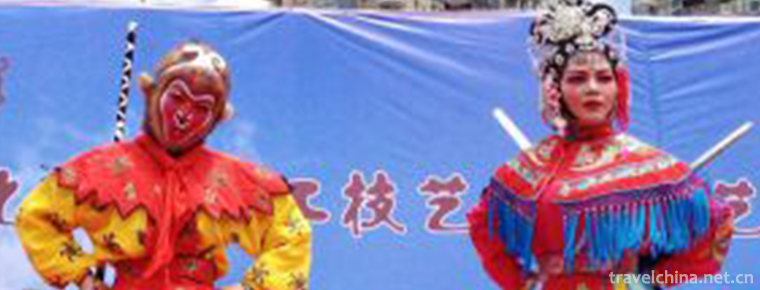
-
Ordos Cultural Tourism Village
Ordos Cultural Tourism Village is located in the front banner of Etok, Ordos City. It is located in the western Ordos grassland at the junction of Mengning and Ningxia. It is located in the beautiful .
Views: 402 Time 2019-01-08 -
Longtan Ecotourism Resort
Lianzhou Longtan Eco-tourism Resort is a tourism project invested and constructed by Lianzhou Aidi Tourism Development Co., Ltd. of Qingyuan City. Based on the original Huangchuan .
Views: 140 Time 2019-01-19 -
Longsheng Hot Spring Resort
Longsheng Hot Spring is located 32 kilometers northeast of Longsheng County. It takes 40 minutes to get to Longsheng Hot Spring by bus from the county town. Hot springs are gushed from rock strata 120.
Views: 183 Time 2019-02-06 -
Pipa Art
In the history of modern Chinese traditional folk music, there are two schools of pipa: the "Shanghai School" (Pudong School) and the "Zhejiang School" (Pinghu School). The Pipa ar.
Views: 102 Time 2019-06-09 -
Manufacturing Techniques of Wanan Compass
Wan'an compass making technology, the local traditional handicraft in Xiuning County, Anhui Province, is one of the national intangible cultural heritage..
Views: 142 Time 2019-06-26 -
Silk Bamboo in Yichang
Yichang silk bamboo, also known as "fine music", is the representative genre of folk instrumental music art in Yichang. It is mainly popular in Yaqueling and Longquan of Yiling District, and.
Views: 138 Time 2019-07-12 -
University of Electronic Science and Technology Of China
Located in Chengdu City, Sichuan Province, the University of Electronic Science and Technology, formerly known as the Chengdu Institute of Telecommunication Engineering, was deployed by Premier Zhou E.
Views: 185 Time 2019-08-31 -
Cai Yong
Cai Yong (133 to 192 years), Zi Bo. Chen Liu Jun Xian county (now Henan Qixian County South) People. Eastern Han Dynasty Famous ministers, writers, calligraphers, talented women Cai Wenji Father..
Views: 148 Time 2019-09-14 -
Ding Zhens voice is on the rise and the tiktok of Ganzi Sichuan has doubled
In November 11th CCTV news and Oriental tiktok were put on a short video of the tremble. Ding Zhen, the "sweet boy" in the video, triggered a phenomenal network event with a transmission volume of more than 5 billion times. At the same time, Ding Zhen also became the propaganda Ambassador of his hometown Litang County, driving the search volume of "Litang" to soar by 620%..
Views: 85 Time 2020-12-07 -
History of Dazhou
Dazhou area belonged to Liangzhou in Xia Dynasty and Yongzhou in Yin Dynasty. The earliest indigenous people were the Cong people, who established the state of Cong (now tuxi Town, Quxian county). In the early Warring States period, Ba people migrated fro.
Views: 203 Time 2020-12-20


